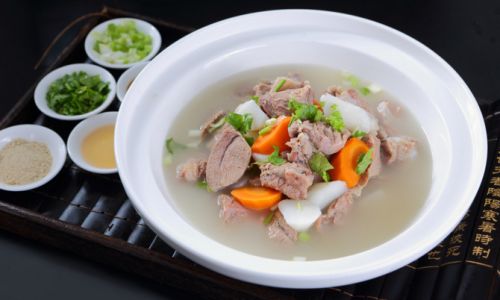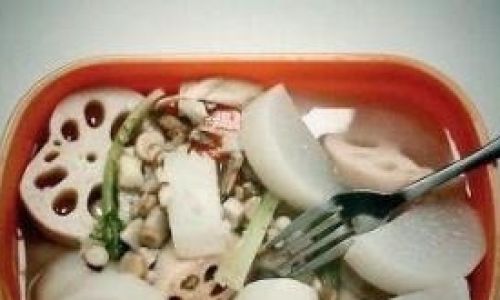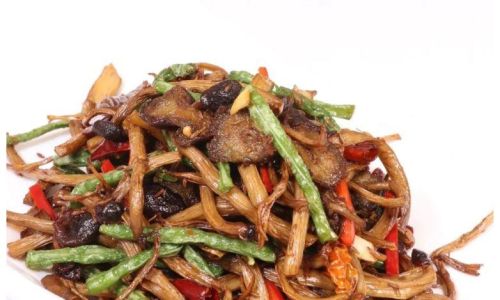Introduction
Spring marks a season of renewal, blooming flowers, and warmer days—a perfect time to focus on rejuvenating your child’s health after the colder months. As nature awakens, so do our bodies’ needs for lighter, nutrient-rich foods that support immunity, digestion, and overall vitality. For children, whose growing bodies require balanced nutrition, incorporating seasonal soups into their diet can be a delicious and effective way to boost health. This article explores the benefits of spring-inspired tonic soups designed specifically for children, offering recipes that blend traditional wisdom with modern nutritional science. From gentle herbs to vibrant vegetables, these soups aim to strengthen young systems, ward off seasonal allergies, and promote energetic play.

Why Spring Soups Matter for Children
Spring is a transitional period when the body sheds the heaviness of winter and adapts to increasing activity levels. Children, in particular, benefit from hydrating, easily digestible meals that replenish vitamins and minerals lost during colder months. Soups serve as an ideal medium for delivering nutrients in a form that is both comforting and gentle on developing digestive systems. They can also address common springtime concerns like seasonal allergies, dry skin, and fatigue.
From a traditional perspective, many cultures emphasize seasonal eating to maintain harmony with the environment. In Chinese medicine, spring is linked to the liver and gallbladder meridians, which govern smooth energy flow and detoxification. Light, slightly pungent soups with ingredients like ginger, lemon, and leafy greens are believed to support these organs. Similarly, Ayurveda recommends warming, grounding foods to balance the kapha dosha, which can become aggravated during spring’s damp, changeable weather.
Key Ingredients for Spring Children’s Soups
The foundation of any nourishing soup lies in its ingredients. Spring offers a bounty of fresh produce that aligns with seasonal wellness goals:
- Vegetables: Asparagus, peas, spinach, carrots, and zucchini are rich in vitamins A, C, and K, as well as fiber and antioxidants. These support immune function, eye health, and digestion.
- Proteins: Lean chicken, turkey, or plant-based options like lentils and chickpeas provide essential amino acids for growth and muscle development.
- Herbs and Spices: Ginger, garlic, turmeric, and parsley add anti-inflammatory and antimicrobial properties while enhancing flavor without excess salt.
- Grains and Legumes: Quinoa, barley, and split peas contribute complex carbohydrates for sustained energy, ideal for active children.
- Broths: Homemade bone or vegetable broths are mineral-rich, aiding hydration and joint health.
Recipes for Springtime Tonic Soups
Below are eight recipes tailored to children’s tastes and nutritional needs. Each recipe includes preparation steps, health benefits, and tips for encouraging picky eaters to try new flavors.
Creamy Carrot and Ginger Soup
Ingredients:
- 1 tbsp olive oil
- 1 onion, diced
- 4 carrots, peeled and sliced
- 2-inch ginger root, grated
- 4 cups vegetable broth
- ½ cup coconut milk
- Salt and pepper to taste
Method:
Sauté onion in olive oil until translucent. Add carrots and ginger, stirring for 5 minutes. Pour in broth, simmer until carrots soften, then blend until smooth. Stir in coconut milk and season.
Benefits: Carrots provide beta-carotene for eye health, while ginger aids digestion and soothes sore throats. The creamy texture appeals to children, and a swirl of yogurt can add protein.
Chicken and Vegetable Noodle Soup
Ingredients:
- 1 tbsp butter
- 2 chicken breasts, diced
- 3 celery stalks, chopped
- 2 carrots, sliced
- 6 cups chicken broth
- 1 cup egg noodles
- 1 tsp dried thyme
Method:
Brown chicken in butter, then add vegetables and thyme. Pour in broth, bring to a boil, and add noodles. Simmer 15 minutes until noodles are tender.
Benefits: A classic comfort food, this soup offers protein, hydration, and immune-boosting zinc from chicken. The vegetables add fiber, and the broth keeps nasal passages moist during allergy season.
Lentil and Spinach Stew
Ingredients:
- 1 cup red lentils, rinsed
- 1 onion, chopped
- 3 garlic cloves, minced
- 4 cups water
- 2 cups fresh spinach
- 1 tsp cumin
- Lemon wedges for serving
Method:
Sauté onion and garlic until fragrant. Add lentils, water, and cumin. Simmer 20 minutes, then stir in spinach until wilted. Serve with lemon.

Benefits: Lentils are high in iron and folate, crucial for cognitive development. Spinach adds iron and vitamin K, while lemon enhances iron absorption.
Sweet Potato and Turmeric Soup
Ingredients:
- 2 sweet potatoes, peeled and cubed
- 1 apple, diced
- 1 tbsp turmeric
- 4 cups vegetable broth
- ¼ cup Greek yogurt
Method:
Roast sweet potatoes and apple until tender. Blend with broth and turmeric until smooth. Top with yogurt and a pinch of cinnamon.
Benefits: Sweet potatoes deliver vitamin A for skin health, while turmeric’s curcumin reduces inflammation. The natural sweetness appeals to kids, and yogurt adds probiotics.
Miso Soup with Tofu and Wakame
Ingredients:
- 4 cups dashi broth (or vegetable broth)
- 3 tbsp miso paste
- ½ cup silken tofu, cubed
- 2 tbsp dried wakame seaweed
- 4 green onions, sliced
Method:
Soak wakame in water for 10 minutes. Heat broth, then whisk in miso. Add tofu and wakame, simmering gently. Garnish with green onions.
Benefits: Miso provides beneficial bacteria for gut health, while wakame offers iodine for thyroid function. Tofu adds plant-based protein, making this soup a light yet filling option.
Pea and Mint Soup
Ingredients:
- 3 cups frozen peas
- 1 potato, peeled and cubed
- 4 cups vegetable broth
- ½ cup fresh mint leaves
- 2 tbsp cream (optional)
Method:
Boil potato until tender, then add peas and broth. Simmer 10 minutes, blend with mint, and stir in cream. Chill for a cold soup or serve warm.
Benefits: Peas are rich in vitamin C and fiber, aiding immunity and digestion. Mint soothes stomach discomfort and adds a refreshing twist.
Beetroot and Apple Soup
Ingredients:
- 2 beetroots, peeled and cubed
- 1 apple, cored and chopped
- 1 potato, cubed
- 4 cups water
- 1 tsp dill
Method:
Boil beetroot, apple, and potato until soft. Blend until smooth, adding water if needed. Stir in dill and serve warm or cold.

Benredients: Beets provide folate and nitrates for circulation, while apples add pectin for gut health. The vibrant color entices children to try it.
Quinoa and Vegetable Medley Soup
Ingredients:
- ½ cup quinoa, rinsed
- 1 zucchini, diced
- 1 bell pepper, chopped
- 4 cups vegetable broth
- 1 tsp paprika
Method:
Sauté vegetables until tender. Add broth, quinoa, and paprika. Simmer 15 minutes until quinoa is cooked.
Benefits: Quinoa is a complete protein source, while zucchini and bell peppers offer vitamins C and A. Paprika adds antioxidants without spiciness.
Tips for Making Soups Child-Friendly
- Involve Kids in Preparation: Let them chop soft vegetables with a butter knife or stir ingredients. This builds excitement and ownership.
- Use Fun Shapes: Cut vegetables into stars or hearts using cookie cutters.
- Blend Smoothly: For textural sensitivities, puree soups until silky. Add a dollop of yogurt or grated cheese as a garnish.
- Freeze Portions: Prepare large batches and freeze in ice cube trays for quick, individual servings.
- Pair with Dips: Serve crusty bread or rice cakes alongside soup for dipping.
Addressing Spring Allergies Naturally
Seasonal allergies often flare in spring due to pollen and mold. Certain soup ingredients can alleviate symptoms:
- Onions and Garlic: Contain quercetin, a natural antihistamine.
- Turmeric and Ginger: Reduce inflammation in nasal passages.
- Bone Broth: Rich in gelatin, which supports gut health—a key factor in immune tolerance.
Incorporate these ingredients into soups regularly to minimize sneezing and itchy eyes.
Hydration and Spring Soups
As temperatures rise, children may resist drinking plain water. Soups offer a hydrating alternative, especially when made with light broths or coconut water. Avoid overly salty recipes, as excess sodium can dehydrate.
Safety and Dietary Considerations
- Choking Hazards: Ensure vegetables are chopped into small, manageable pieces.
- Allergens: Check for common allergens like nuts, dairy, or gluten. Substitute ingredients as needed (e.g., coconut milk for dairy).
- Portion Sizes: Offer small bowls to start, allowing children to ask for seconds if hungry.
Conclusion
Spring is an optimal time to revitalize your child’s diet with wholesome, flavorful soups that celebrate the season’s freshness. By combining seasonal produce, lean proteins, and immune-boosting herbs, these recipes offer a foundation for lifelong healthy eating habits. Whether battling springtime allergies or simply seeking a comforting meal, these tonic soups provide nourishment that supports growth, energy, and resilience. Experiment with flavors, involve your children in the kitchen, and watch as they savor the benefits of spring’s bounty—one bowl at a time.






0 comments